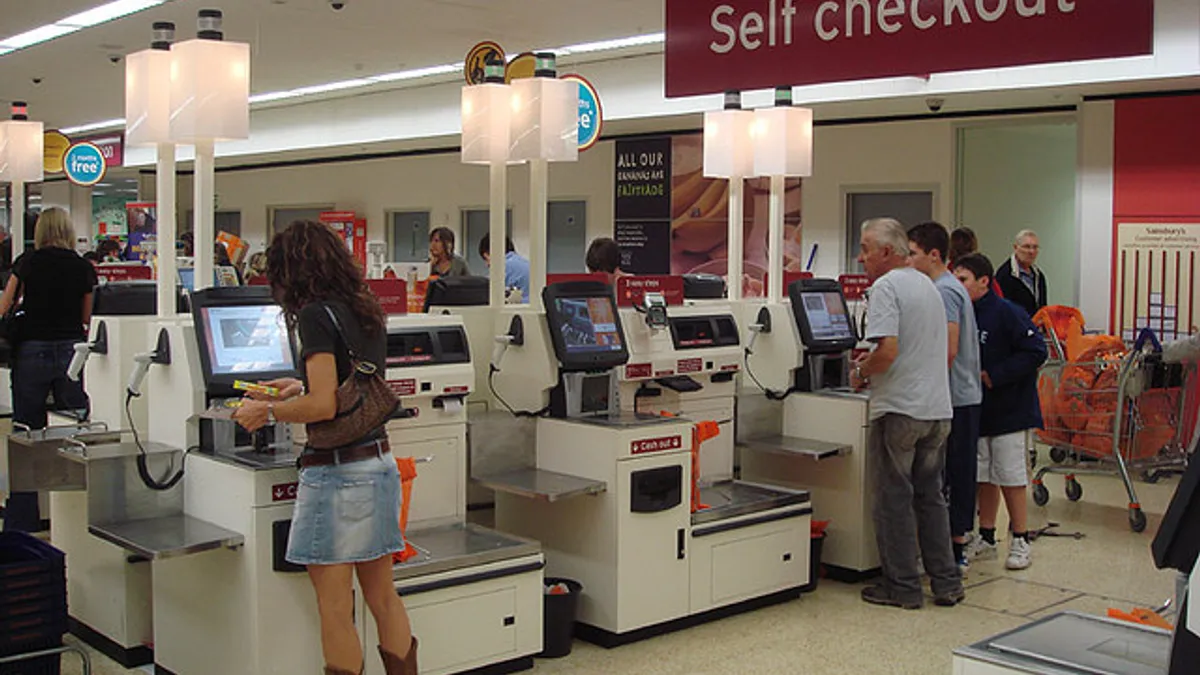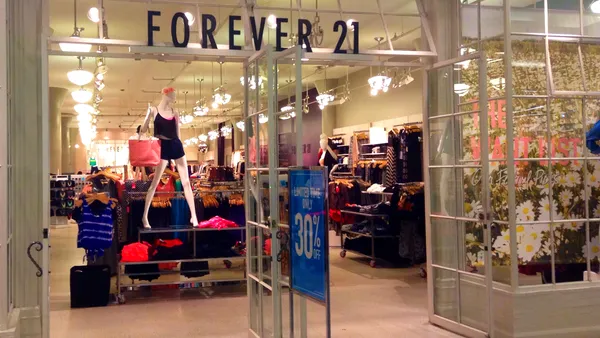Dive Brief:
-
A record 49,000 self-checkout terminals were delivered to retailers around the world last year. Shipments to U.S. retailers jumped about 155% in 2016, more than double the previous year's growth and reflecting increasing investment in self-checkout systems by some of the largest U.S. retailers, according to a new study by London-based strategic research and consulting firm RBR.
-
RBR said it expects to see more than 400,000 self-checkout terminals deployed in more than 60 countries worldwide by 2022.
-
NCR remains the market leader for self-checkout gear, accounting for 73% of shipments in 2016 and with growth of about 6% in deliveries. Toshiba held second place on strong market position in Japan, while Diebold Nixdorf’s was the market mover among the top players, hopping from fourth place to third place last year.
Dive Insight:
Self-checkout technology has been around for a while now, but adoption always has seemed hit and miss, with several large retailers, including Target, using it and working hard to refine the self-checkout experience. But others, like Costco and CVS, adopted it several years ago only to change their minds and pull back on the investment in recent years.
Some of those retreats from self-checkout deployment may have had to do with the inconsistent performance of early-generation terminals in scanning products and with an overall clunky experience for something intended to help shoppers save time. Looking at 2016, the market for self-checkout systems is in better shape than ever, with record shipments overall and U.S. retailers leading the way.
Recent technology advancements may have played a role in the growth. For example, Diebold Nixdorf recently announced a new low-profile self-checkout system that could make the concept more viable for a broader variety of merchants, while Panasonic announced a fully automated checkout machine.
RBR, however, suggested that a lot of the recent growth could also be driven by the simple fact that more retailers are investing more in self-checkout, and merchants who hadn't tried it before are finally moving into a pilot testing phase.
All of this growth in self-checkout adoption comes at a time when Amazon is challenging the overall concept of funneling shoppers through any kind checkout line — self-service or otherwise — with Amazon Go.
Amazon Go's aims to support line-less checkout through automatic mobile payments. This would appear to sidestep the whole self-checkout evolution, leaving retailers that want to keep up with Amazon questioning the need to have checkout lanes of any kind. But if RBR's research is any indication, the self-checkout market remains healthy, with growth still ahead.













